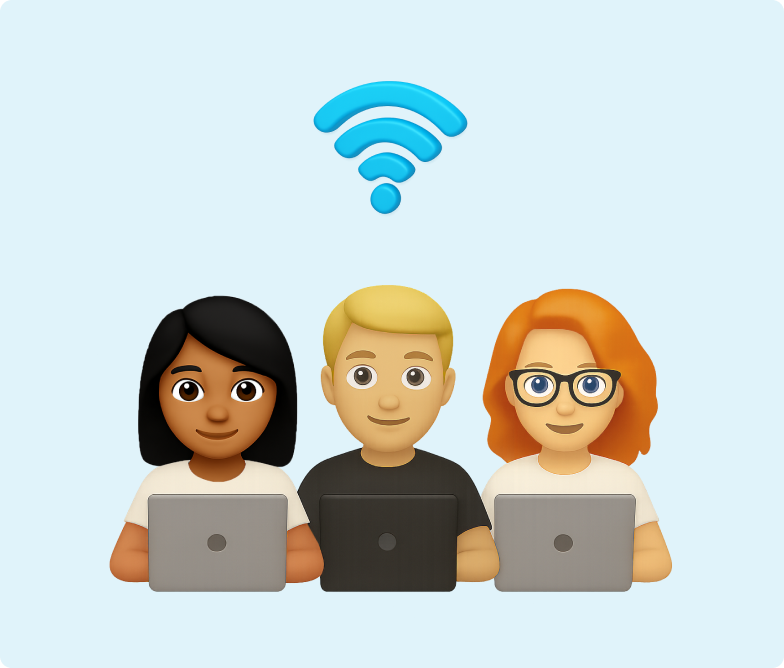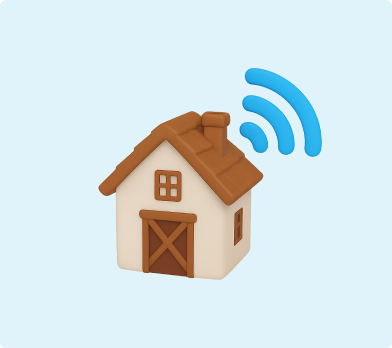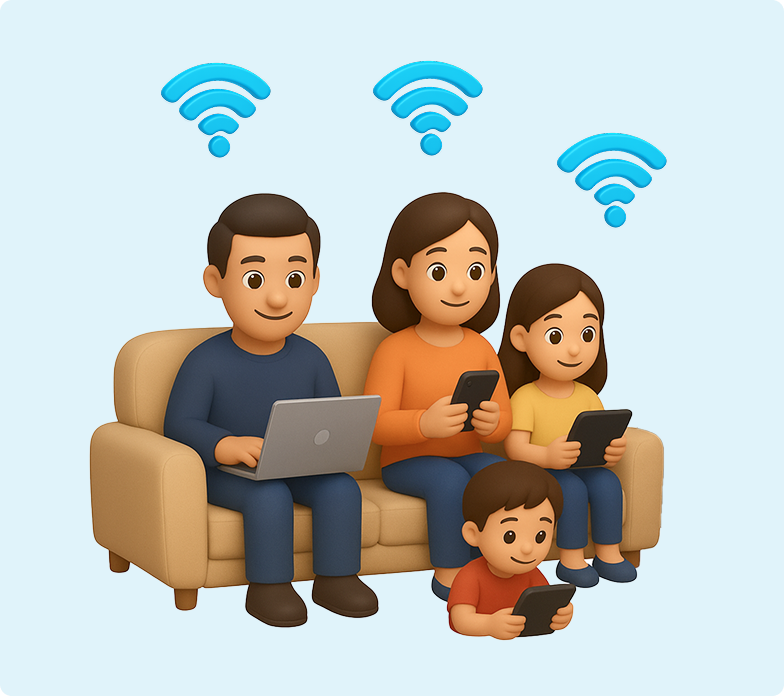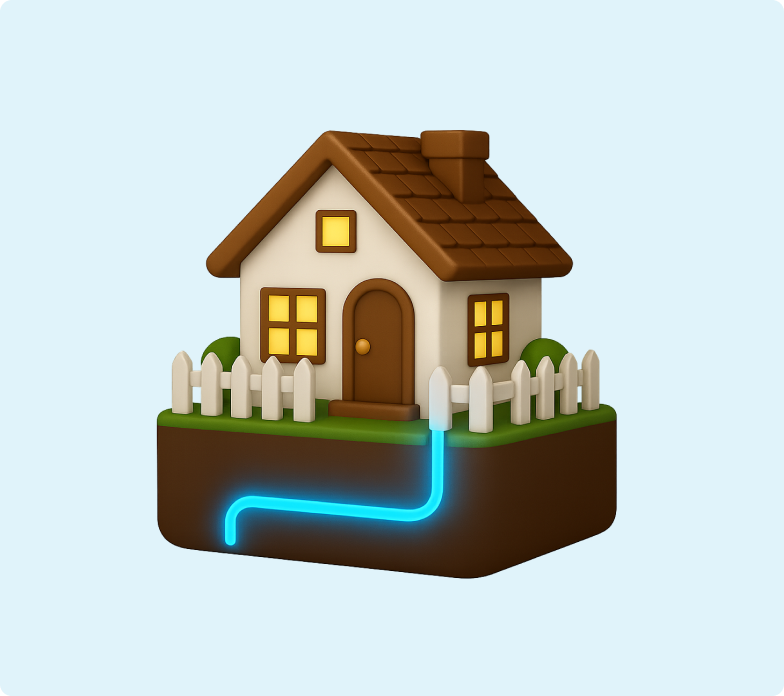Hollywood to your home
Blockbuster beginnings: The tech behind Wireless Broadband traces back to WWII, when Hollywood actress Hedy Lamarr helped invent frequency-hopping to secure communications.
Both Fibre and Wireless Broadband can deliver a great online experience, but they suit different needs. Some households want the speed and stability of Fibre, while others need the flexibility and convenience of Wireless. On this page, you’ll find which connection best matches different lifestyles and situations.
READ TIME: 8MIN
Wireless Broadband is ideal for:
Fibre Broadband is ideal for:
If you’re renting a home or flat, especially short-term, Wireless is a winner. There’s no installation damage or waiting, and you can take it with you when you move. For instance, a group of students renting for the year can set up Wireless on day one and not worry about waiting for the landlord to approve Fibre.

Wireless is great if you require connectivity on short notice. Moving in and need WiFi immediately for work? Wireless. Fibre might have a lead time, whereas a Wireless modem can be couriered overnight. Also, if your existing internet is down and you can’t wait for a fix, a Wireless plan can be a temporary solution.

Blockbuster beginnings: The tech behind Wireless Broadband traces back to WWII, when Hollywood actress Hedy Lamarr helped invent frequency-hopping to secure communications.

If your household usage is fairly basic e.g. a couple who mostly streams in the evening, browses the web, and checks email – Wireless is usually more than sufficient. You likely won’t notice the difference versus Fibre for those activities, aside from saving some money. For such users, the blazing speeds of Fibre would be overkill. Wireless gives good enough performance for routine needs with less hassle.

Those on a tight budget or looking to save money can opt for Wireless to shave $10–$30 off the monthly bill. Especially if you’re bundling Mobile or Power, Wireless plans can become very economical. For example, families already with 2degrees Mobile might choose 2degrees Wireless Broadband to get the $10 bundle discount, maximizing value.

Obviously, if you can’t get Fibre, Wireless is your main choice. Wireless is strongly recommended over aging ADSL/VDSL in rural areas because it often offers higher speeds. Anyone in a rural area with decent 4G signal will likely find Wireless broadband a huge improvement over copper lines. It’s the lifeline for rural connectivity today. Similarly, if your street is scheduled for Fibre next year but not yet connected, Wireless fills the gap in the interim.

If you don’t stay in one place long e.g., contractors on short projects, digital nomads house-sitting around the country, or someone anticipating moving cities, Wireless gives you internet that isn’t tied down. This flexibility suits those whose living situation changes often.

Wireless broadband is ideal as a backup connection for businesses or home offices. It runs independently of your fibre or copper line, so if your main connection goes down, you can stay online with minimal disruption. It’s quick to set up, flexible to move, and offers reliable 4G or 5G speeds when you need them most.

If you’re the kind of user who games or is a heavy downloader, Fibre is pretty much the way to go. Competitive online gamers will appreciate the low ping – serious gamers often insist on Fibre to remove any network-induced disadvantage. Video streamers (Twitch/YouTube creators) or anyone uploading large files (photographers, etc.) will benefit from Fibre’s higher upload speeds. If you have a 4K home theatre and want multiple concurrent UHD streams, Fibre is the way.

More people generally means more simultaneous internet usage. A family of five with each person on devices, plus smart TVs and IoT devices, will find Fibre’s capacity far more accommodating. It ensures that even during the busy evening period, everyone can do their thing without buffering. Parents working from home while kids attend online classes or stream – Fibre can juggle it all. Essentially, for many devices and users, Fibre provides the needed bandwidth headroom that Wireless might not.

If you depend on your internet for work daily (e.g., frequent video calls, large VPN file transfers, remote desktop, cloud services), the stability and low latency of Fibre can be mission-critical. Fibre gives that extra reliability and quality that ensure your video calls are crisp and your cloud apps sync quickly. It’s the closest to “office-grade” connectivity at home. Many remote workers choose Fibre to mimic the fast office network environment. Also, some corporate VPNs or tools might not play nicely with the NAT on Wireless networks. Fibre (with a clear IP) avoids that complexity.

If you own your home or plan to be there long-term, installing Fibre is a great investment in connectivity. Once it’s in, you’re set for years (future technologies can pump even more through the same Fibre strand). Homeowners often choose Fibre because it can also add to property appeal (homes advertised as “Fibre installed” have an edge for some buyers/renters). So, for stable long-term residence, the one-time effort to get Fibre yields ongoing benefits in speed and reliability.

In summary, viewing these factors: Wireless broadband is like a convenient, versatile utility player; it’s cheaper, easy to get going, and you can mould it to short-term needs. Fibre is like the high-performance specialist; a bit more effort to get, but then it delivers top-notch results consistently. Neither is strictly “better” in all respects; it truly depends on the user’s priorities and situation.
Help with Fibre Broadband
What’s the difference between Fibre, VDSL, ADSL, Wireless 4G and Wireless 5G broadband?
What broadband speed do I need for gaming, streaming, or working from home?
Where to put your modem for the best WiFi at home
Find a store